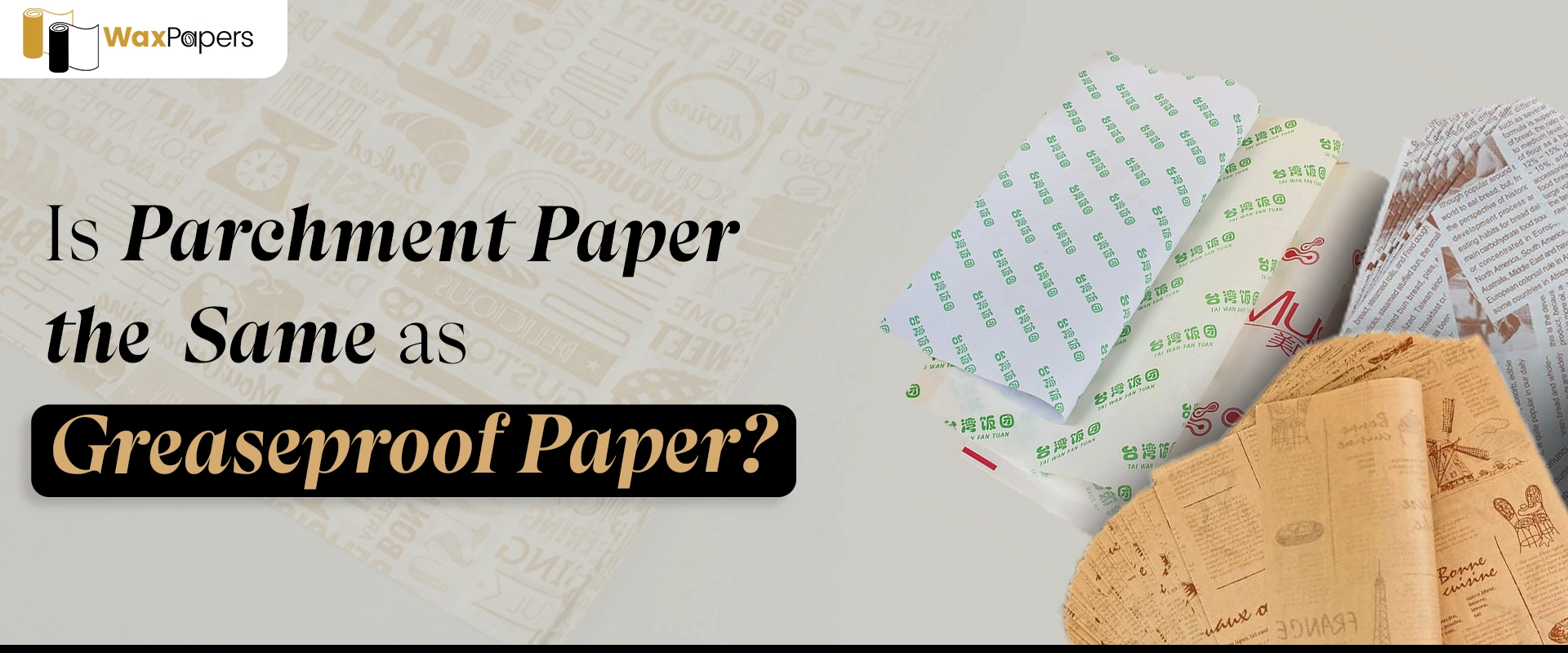
Is Parchment Paper the Same as Greaseproof Paper?
May 20, 2024 Explore Blogs
If you have a baking and cooking business then materials can make the break a recipe. Among these, parchment and greaseproof paper are two staples that are often used for interchangeably in the kitchen. However, it is truly said that they serve different purposes. custom parchment paper that is coated with food-safe ingredients is used in cooking and baking. The heat-resistant, nonstick surface of the pan makes it easy to line pans, funnel ingredients, and even pipe icing onto baked goods.
Greaseproof paper works well in a frying pan for cooking fish in a non-stick pan. You can keep the paper in place by adding oil to the pan, then placing the paper on top. Despite their similar appearances, these handy papers have distinct characteristics that make them better suited for specific tasks.
In this guide, waxpapers.ca helps to find the key differences between parchment and greaseproof paper, helping you choose the right tool for the job. Let’s start and finding the difference and enhancing their customers’ experience.
What is parchment paper (Baking Paper)?
Parchment paper is also known as baking paper. It is a type of paper that has been treated with a thin coating of silicone. This coating gives the paper a non-stick, heat-resistant surface that is ideal for baking. Non-stick paper can tolerate temperatures up to 450°F (230°C) without burning or becoming brittle.
The silicone coating on custom paper makes it perfect for lining sheets and cake pans. it also contains baked goods from sticking. It’s commonly used for different tasks like:
- Lining baking sheets and cake pans are used for bakery items.
- Baking cookies, cakes, and other baked goods are also safe by the use of this paper.
- Cooking “en papillote” (in parchment paper pouches).
- Preventing sticking and easy cleanup.
Characteristics of Parchment Paper
There are a lot of characteristics but we are here to explain some characteristics that will help to find the difference between these two types of paper.
Non-stick surface – This custom paper has a silicone coating that protects the food from sticking to it. This will make it ideal for baked cookies, pastries, and other delicate items.
Heat resistance – Heat resistant paper can hold out high temperatures without burning or melting, typically up to 450°F (232°C).
Easy release – the important thing about customized paper is it is easy to release due to its non-stick nature. Food is easily released from silicon coated paper without leaving any residue behind.
Moisture resistance – This type of paper has a certain level of moisture resistance, which helps to prevent the absorption of liquids and oils during baking.
Versatility – Parchment paper can be used for different types of purposes, such as lining baking pans, food wrapping for steaming, and creating wax paper packets for cooking.
What is Greaseproof Paper?
On the other hand, Greaseproof paper is a different type of paper that is treated to be resistant to oil and grease but does not have non-stick properties. Greaseproof paper is made by refining the paper stock to create a sheet with low porosity and then treating it with substances like starch, alginates, or carboxymethyl cellulose. This makes it impermeable to grease and oil, making it useful for;
- You can be lining food packaging like takeaway boxes.
- Wrapping sandwiches and other foods to protect the taste.
- Separating baked goods like cakes and cookies items in the food industry.
Characteristics of Greaseproof Paper
Grease resistance – Custom greaseproof paper is basically designed to protect the food from sickened grease and oil. It is suitable for wrapping greasy or oily foods that improve the customer’s experience.
Moisture resistance – The wax coating on greaseproof paper helps to prevent the absorption of moisture. It helps to keep the food fresh and prevent humidity.
Non-stick surface – Due to the non-stick surface of the greaseproof paper it is suitable for certain baking applications. The purpose of a non-stick surface is that you can easily safe and clean your food for a long time.
Lower heat resistance – Greaseproof paper has a lower heat resistance compared to parchment sheet. It can typically withstand temperatures up to 375°F (190°C) before the wax coating starts to melt.
Key Differences
Composition
The primary difference between parchment paper and greaseproof paper lies in their composition. Composition is the main factor in finding the difference in the competitive market. Baking paper is treated with acid to give it heat resistance and non-stick properties while the greaseproof paper is coated with wax for grease resistance.
Heat resistance
This paper is heat-resistant and bears a high range of temperatures and the other side greaseproof paper is not heat-resistant and should not be used in the oven.
Non-stick properties
They offer superior non-stick properties compared to greaseproof paper. This property makes it ideal for baking and roasting food items.
Conclusion
In conclusion, in the above discussion according to Waxpapers.Ca, parchment paper and greaseproof paper are both useful tools in the kitchen but are not the same. It is heat-resistant, non-stick, adaptable, and suitable for a wide range of cooking tasks.
On the other hand, greaseproof paper is primarily used for its grease resistance and is not suitable for high-heat applications. Understanding the differences between these two types of paper can help you make informed decisions in the kitchen and achieve better results in your cooking and baking industries.


